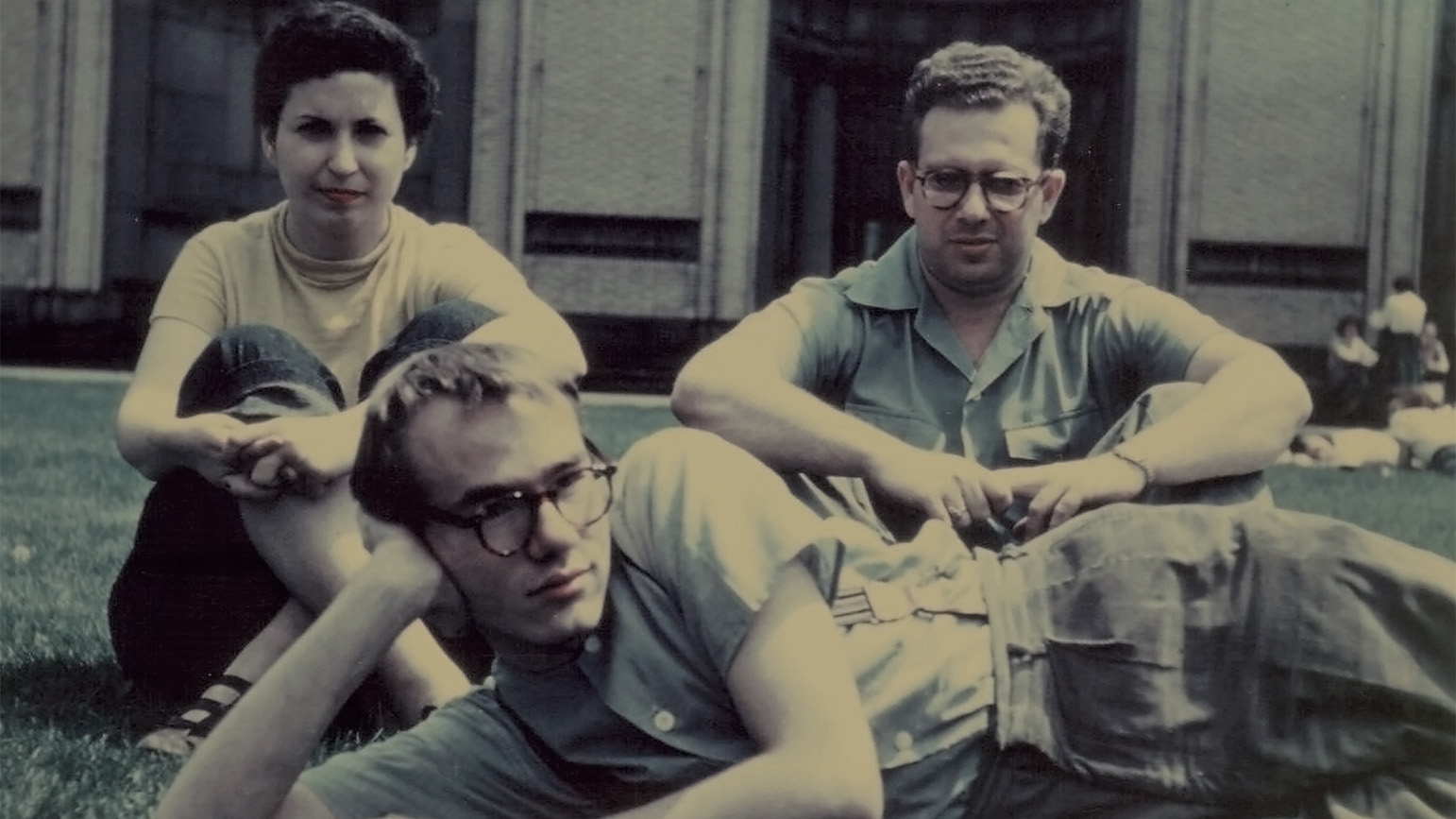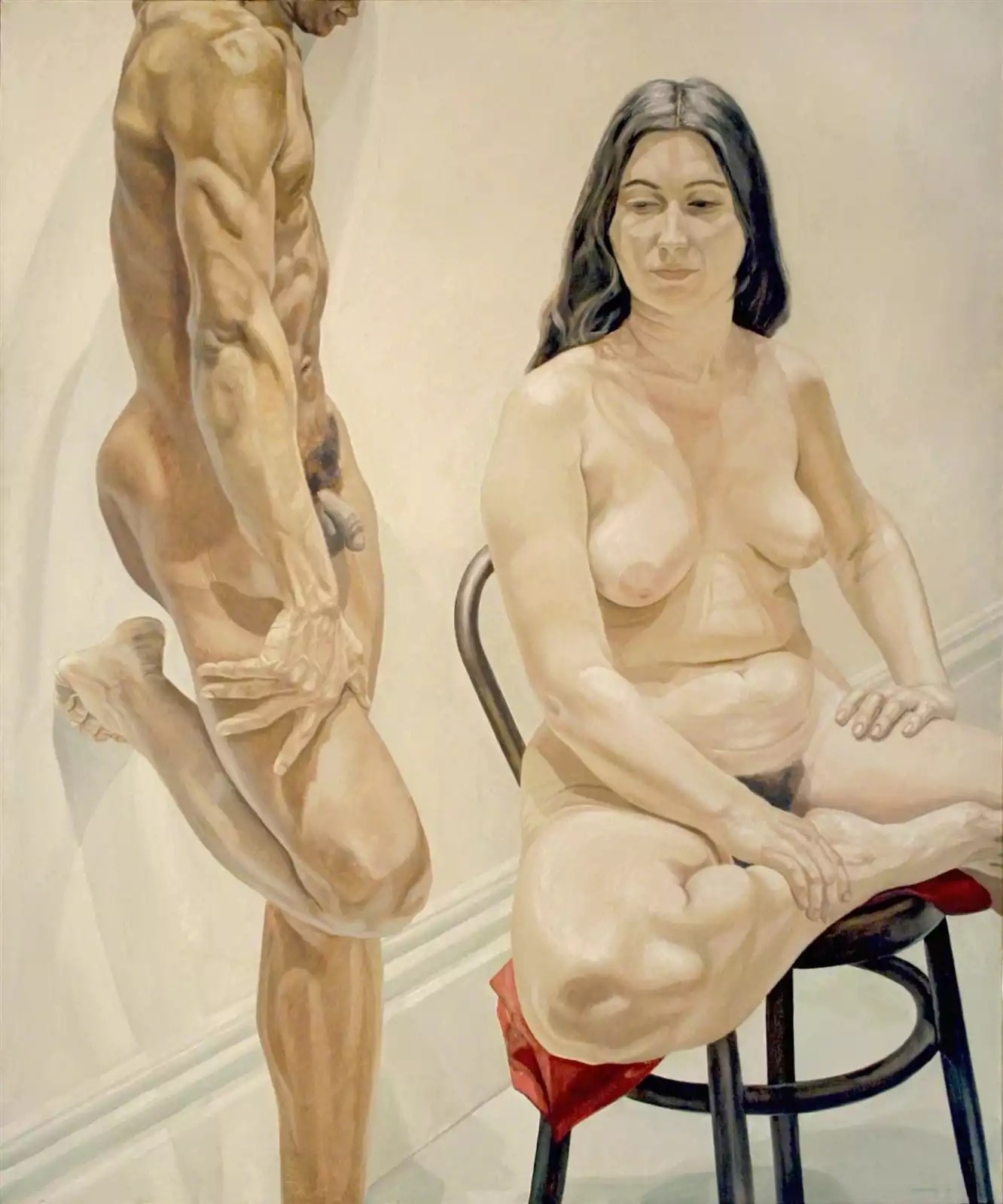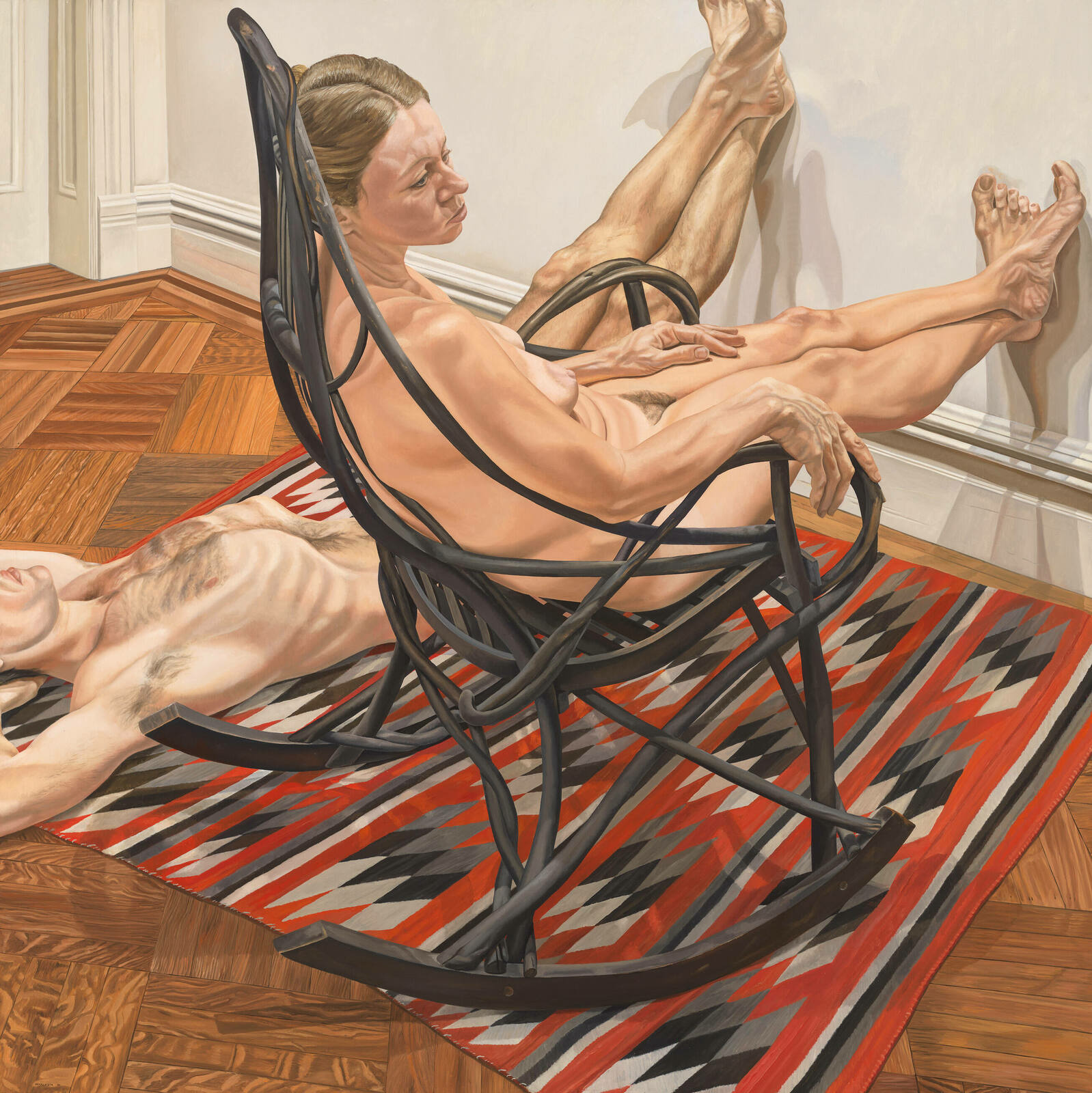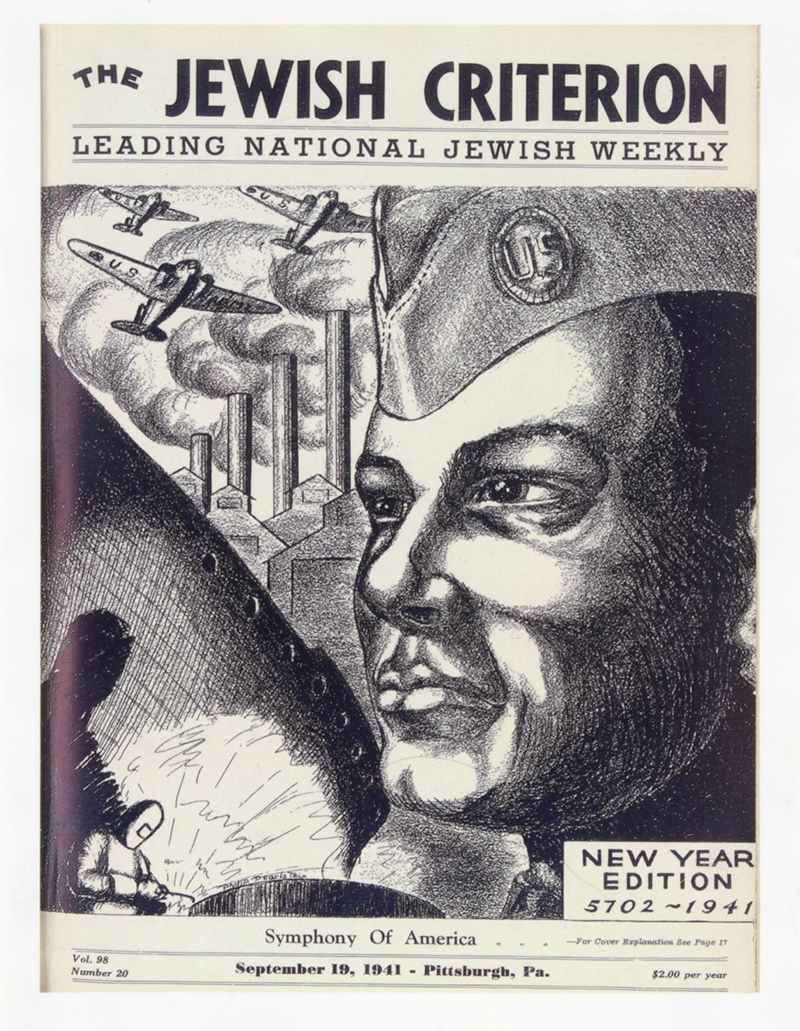
Renowned for reinvigorating figurative painting, Pearlstein (BFA ’49) challenged conventions of realism and helped redefine postwar American art.
When Philip Pearlstein began painting nude models in the early 1960s, most influential critics and art theorists thought figurative painting was exhausted, that the genre was nostalgic and counter-contemporary. Pearlstein’s exacting depictions of the naked body—splayed out naturally in his studio with fatigued expressions, slouched postures, harsh lighting, and odd cropping along the edges of the canvas—ushered in new possibilities for depicting the human form and influenced generations of future artists. Philip Pearlstein died on December 17 in New York City at the age of 98.
Pearlstein began painting in his signature style at a time when most artists were embracing the romanticism of Abstract Expressionism. His models offered contemporary art a completely revolutionary and modern notion of the human form. Unlike historical depictions of nude models—which partook in a narrative, functioned symbolically, or invited erotic interest (or, frequently a combination of all three)—his models are free to exist as a factual recording of his studio.


Pearlstein was born in Pittsburgh in 1924 and first began to hone his artistic skills at the Saturday morning art classes offered by the Carnegie Museum of Art. As a student at Allderdice High School in Squirrel Hill, he won Scholastic Art Prizes twice and his winning paintings were published in Life Magazine.
He began at Carnegie Institute of Technology (now Carnegie Mellon University) in 1942, but his studies were quickly interrupted when he was drafted in 1943 into the war effort in Italy. Due to his art skills, he was assigned to a unit that made road signs and illustrations for training materials. In his free time, he made drawings to send home to his family, more than one hundred 100 in total, and saw the many of the rich Renaissance art treasures in Florence.
Back at Carnegie Tech in 1946, Pearlstein studied under Robert Lepper, one of the most influential art educators of the time. Lepper established the country’s first Industrial Design degree program, and after Pearlstein showed him some of the work he had done during the war, Lepper hired him to help with a freelance project designing pamphlets for Alcoa architectural projects.


During this time, Pearlstein met Andy Warhol and Dorothy Cantor, the former of whom became a close friend and the latter of whom he married in 1950. Upon graduation, he moved to New York with Andy Warhol and the two shared an apartment for several months. In fact, Warhol’s brothers only allowed him to move to New York if Pearlstein would keep watch of him.
Early in New York, Pearlstein supported himself as a graphic designer and exhibited with the scrappy but influential artist-run Tanager Gallery on the Lower East Side. In 1955, He earned a Master’s degree from the Institute of Fine Arts at New York University, where he wrote his thesis on Francis Picabia and Marcel Duchamp.
During this period, Pearlstein largely focused on abstract images of landscapes, but he became increasingly interested in realistic artwork due to the basic exercises he assigned his students while teaching at Pratt Institute of Brooklyn from 1959 to 1963. Pearlstein then went on to teach at Brooklyn College from 1963 to 1988.
Once he discovered the richness of figurative painting, he continued to refine and adapt these images for the rest of his life. Pearlstein held his last solo exhibition in 2022 at Betty Cunningham Gallery in New York City, which focused on still-life watercolors of his collection of art, antiquities, Americana, souvenirs and toys.




